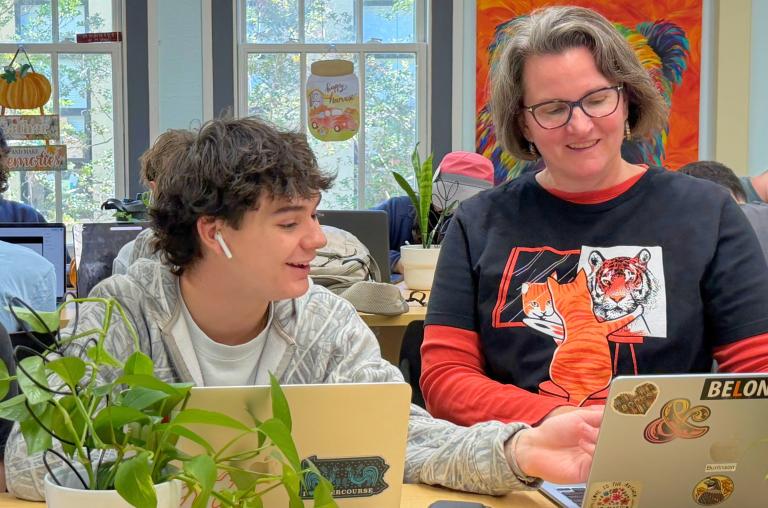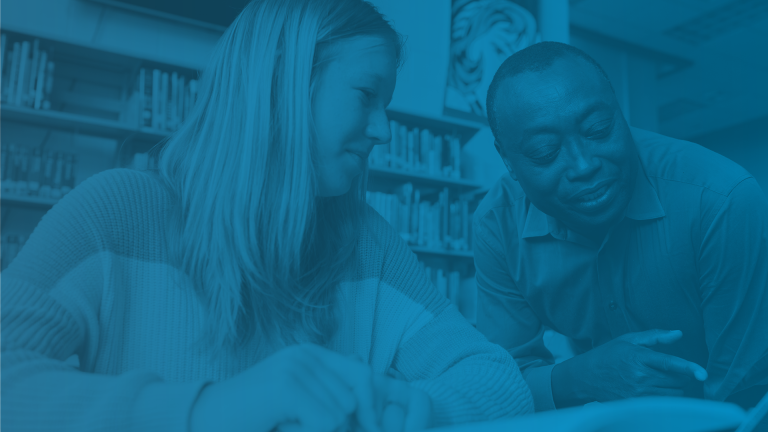We all felt it: the past eighteen months have been education’s most disrupted time in over a century. We’re all recovering, but also wondering what’s next.
This August, Instructure brought together K-12 thought leaders to discuss the future of education in a post-pandemic world. Eight panelists reflected on lessons learned in a chaotic year and how that translates into a future vision of teaching and learning.
Richard Culatta, former director of the Office of Educational Technology at the US Dept of Education and chief executive officer of ISTE, moderated the discussion and urged all educators alike: Don’t miss this moment. This is the time to move innovation forward.
Redefining the classroom
Virtual learning redefined the traditional classroom. Thought leaders agreed — blurring the lines between home and school was a positive thing.
“We learned that learning remotely is actually doable and for some, even preferable,” said Cat Flippen, instructional tech coordinator at Jackson County Schools in Georgia.
If learning is not limited to the four walls of a classroom, teacher prep programs will need to adapt. Suzy Cox, associate professor of education at Utah Valley University, said it will be standard practice for teachers to learn to prepare lessons in a face-to-face format, an online format, or one that bridges both.
With these blurred boundaries of learning, equitable access needs to be top of mind. Over 80% of teachers say technology will become increasingly important, but an estimated one-fourth of all school-aged children have no broadband or web-enabled devices at home.
Using data for good
Data is abundant. But is it measuring the right things?
“[Post-pandemic] there’s a different set of questions we need answers to now,” said Michael Hofherr, head of education strategy at Amazon Web Services.
We need “some sort of consensus around what we're trying to accomplish in schools,” said Trenton Goble, vice president of K12 strategy at Instructure. “What is the outcome? If it’s just performing well on an end-of-level test, it gets easy. But if we have a broader goal of making sure that individual students' needs are being met academically, socially, emotionally, that changes those data points that we need to be gathering and looking at.”
Cat Flippen said Jackson County Schools offers a preview of those new data points. Their new all-virtual school offers personalized learning plans that integrate student-created goals, parent goals, and a project-based learning portfolio.
Reinventing assessment and grading
A live-stream participant commented that grades and testing create undue anxiety for learners, and asked the panelists their thoughts on moving away from grading.
“I think the assessment piece, the grade piece, it's hard to let that go because there's so many
people who still depend on the grade, but we can reinvent what the grade represents,” Flippen said.
So what holds us back from changing this structure?
“It's a mindset of what has been done before, what we've been trained to do as teachers in the past, what's convenient for the adults in our students' lives rather than what's really best for kids and for their futures in this society,” Cox said.
“If you're not identifying what kids know and don't know, and not using that information to drive your interventions and evaluating your own practice at the same time, then you're not teaching, right? Kids aren't learning. So, if we think about assessment in that lens, I see assessment as an important, essential element of the teaching and learning cycle,” said Goble.
Pandemic remote learning forced teachers to get creative on how they measured learning and technology opened the door for new modes of assessment. Three-fourths of teachers delivered formative assessments during remote learning.
Creating artifacts — videos, blogs, even Minecraft worlds — is “one of the most powerful and underused ways of using technology to think about assessment,” Culatta said.
The pandemic — a good thing for education?
2020 was painful for educators, no doubt. But Culatta thinks that pain will be for good.
“If we can leverage this moment, we will be able to say that this crazy pandemic thing was one of the best things that ever happened to education,” Culatta said.
Watch the on-demand session to hear more from K-12 thought leaders on how to move forward after a disruptive year.
Related Content
 inst-3step.jpg
inst-3step.jpgBlogs
 kim-classroom.jpg
kim-classroom.jpgBlogs
 screenshot_2025-11-21_at_11.46.15_am.png
screenshot_2025-11-21_at_11.46.15_am.pngBlogs

